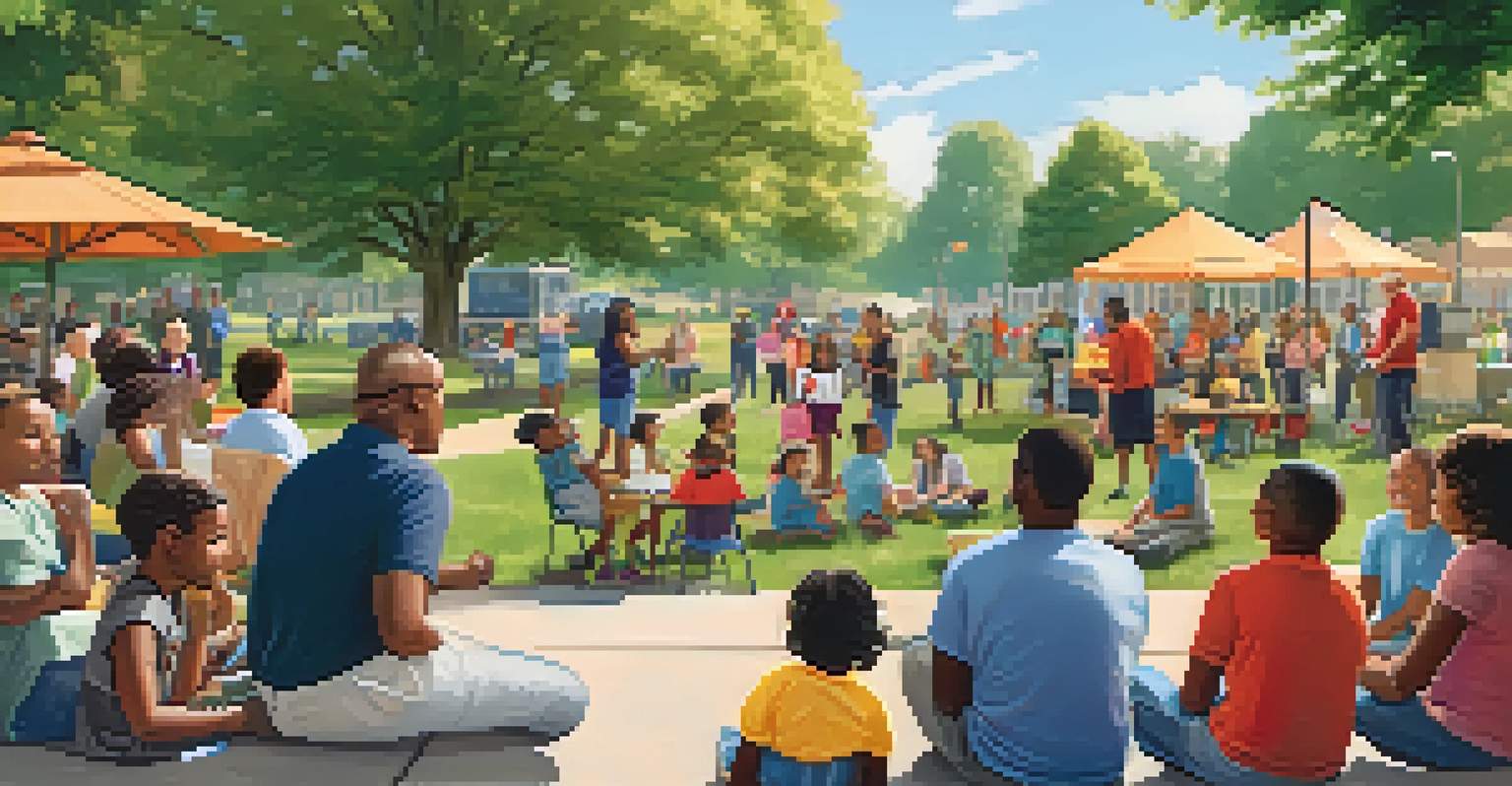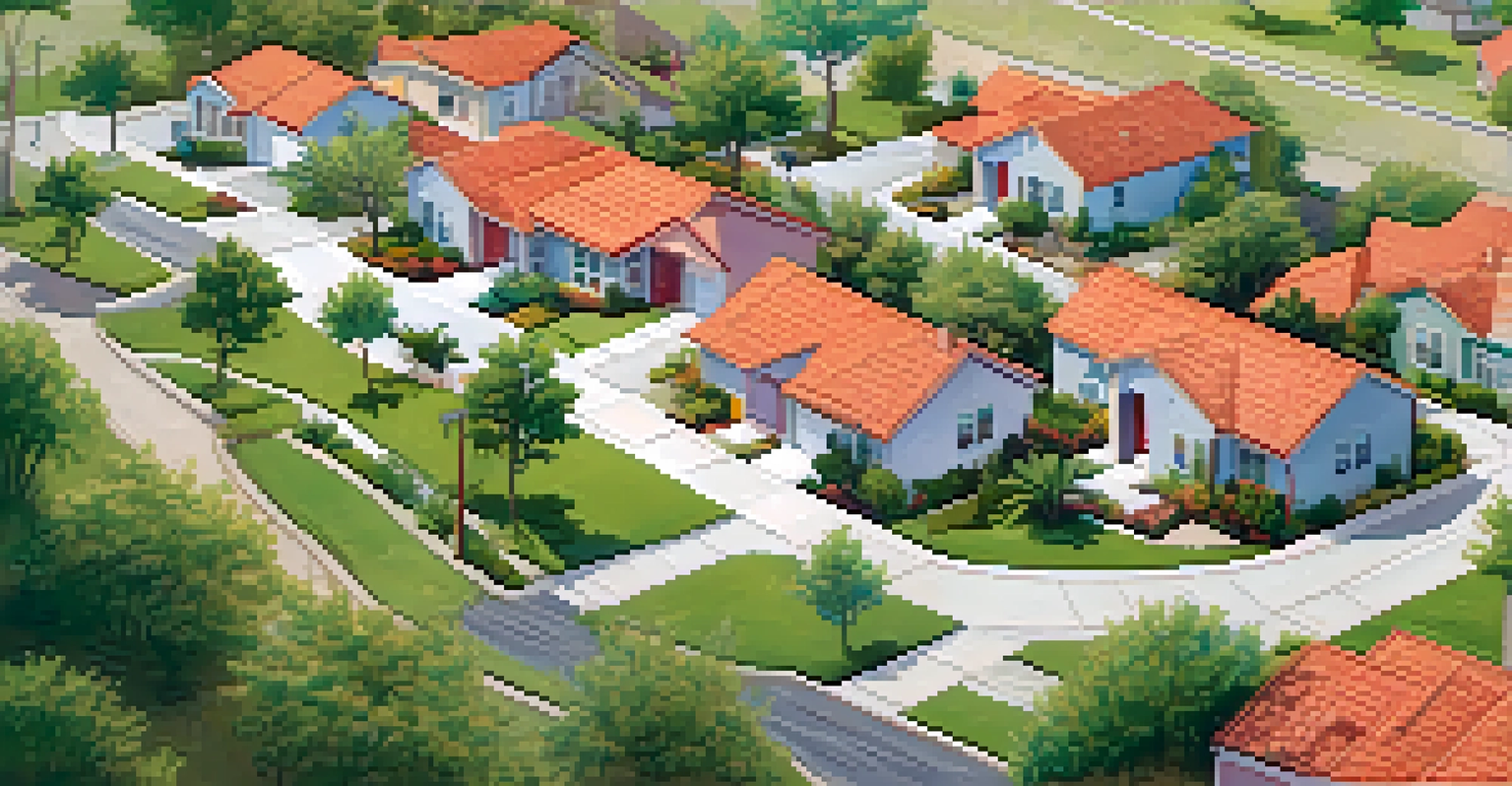Wildfire Preparedness in Colorado: Community and Government Roles

Understanding Wildfire Risks in Colorado's Diverse Landscapes
Colorado's varied landscapes, from dense forests to arid plains, create unique wildfire risks. The state is particularly vulnerable due to its dry climate and varying vegetation. Knowing where wildfires are most likely to occur is the first step in preparing communities for potential threats.
An ounce of prevention is worth a pound of cure.
In recent years, Colorado has experienced an increase in wildfire incidents, highlighting the need for education and awareness. Communities must recognize the signs of wildfire risk, such as dry conditions and high winds. This understanding can empower residents to take proactive measures to protect their homes and surroundings.
Moreover, fostering a culture of preparedness can help mitigate the impacts of wildfires. Engaging local residents in discussions about wildfire risks encourages them to collaborate on safety initiatives. Through education and awareness, communities can build resilience against these natural disasters.
The Role of Local Governments in Fire Management Strategies
Local governments play a crucial role in managing wildfire risks through effective fire management strategies. They are responsible for creating and enforcing fire codes, conducting controlled burns, and maintaining firebreaks. These proactive measures help to reduce the potential for devastating wildfires in their jurisdictions.

In addition to these strategies, local authorities also provide resources and training for residents. Offering workshops on fire safety and prevention can equip community members with valuable knowledge. This collaborative approach fosters a sense of responsibility and encourages citizens to take action in their own neighborhoods.
Community Preparedness is Vital
Engaging residents in local initiatives enhances wildfire safety and strengthens community bonds.
Moreover, local governments often collaborate with state and federal agencies to enhance their wildfire preparedness efforts. By sharing resources and expertise, they can develop comprehensive plans that address the unique needs of their communities. This partnership is vital for effective wildfire response and recovery.
Community Involvement: A Key Element in Wildfire Preparedness
Community involvement is essential when it comes to wildfire preparedness. Engaging residents in local preparedness initiatives can significantly enhance safety measures. When communities come together, they can share knowledge, resources, and strategies to better protect their homes.
The best way to predict the future is to create it.
Neighborhood groups can organize events like fire safety days or community clean-up efforts to reduce fuel loads around homes. These collective actions not only promote safety but also strengthen community bonds. When people know their neighbors are prepared, it creates a sense of security and solidarity.
Furthermore, having a strong community network allows for better communication during wildfire events. Residents can share real-time updates and resources, helping everyone stay informed. This proactive approach can make a significant difference in how effectively communities respond to wildfires.
Emergency Response Plans: Coordinating Community and Government Efforts
Effective emergency response plans are critical in wildfire situations. These plans outline the roles of both community members and government agencies in responding to wildfires. Coordination between these groups ensures a well-organized and efficient response during emergencies.
Local governments often develop these plans in collaboration with community input. This ensures that the unique needs and concerns of residents are addressed. By involving the community in planning, authorities can create more effective strategies for evacuation, communication, and resource allocation.
Local Governments Lead Fire Strategies
Local authorities play a crucial role in managing wildfire risks through fire codes, controlled burns, and community training.
Regular drills and training sessions can also prepare both residents and officials for real-life scenarios. Practicing evacuation routes and emergency protocols can save lives and minimize confusion during an actual wildfire. A well-prepared community is better equipped to handle the challenges posed by wildfires.
Education and Training: Empowering Residents for Safety
Education and training are pivotal in empowering residents to prepare for wildfires. Local governments and fire departments often offer programs that teach fire prevention techniques and safety measures. These programs provide essential information on creating defensible spaces around homes and understanding fire behavior.
Workshops and online resources can also help residents stay informed about the latest wildfire trends and safety practices. By equipping individuals with knowledge, communities can foster a culture of preparedness. This proactive approach can minimize panic and confusion during wildfire events.
Moreover, community-led initiatives can enhance education efforts. Residents can share their experiences and lessons learned, creating a supportive environment for learning. This peer-to-peer education can be incredibly effective in promoting wildfire safety.
Utilizing Technology for Enhanced Wildfire Preparedness
In today's digital age, technology plays a vital role in wildfire preparedness. Various applications and platforms can provide real-time updates on fire risks, evacuation routes, and safety tips. Utilizing these tools can help residents stay informed and make timely decisions during emergencies.
Additionally, social media serves as a powerful communication tool for spreading awareness about wildfire safety. Local agencies can use these platforms to share crucial information with the community quickly. This immediate access to information can be lifesaving during a wildfire crisis.
Technology Enhances Wildfire Response
Utilizing technology, such as apps and social media, significantly improves real-time communication and preparedness during wildfires.
Finally, technology can aid in monitoring and predicting wildfire behavior. Tools like satellite imagery and fire modeling software help authorities anticipate fire spread and assess risks. By leveraging these advancements, communities can enhance their preparedness and response strategies.
Building Resilient Communities: Long-term Strategies for Wildfire Preparedness
Long-term strategies are essential for building resilience against wildfires. This includes developing comprehensive land-use plans that consider fire risk and implementing policies that promote fire-safe construction. By integrating wildfire preparedness into community planning, residents can significantly reduce their vulnerability.
Investing in community infrastructure, such as fire-resistant landscaping and access roads, is also crucial. These enhancements not only improve safety but also contribute to the overall aesthetic and value of the community. A well-planned environment can act as a buffer against wildfires.

Ultimately, fostering a culture of resilience requires ongoing commitment from both residents and government officials. Continuous education, training, and community engagement can ensure that preparedness remains a priority. Together, these efforts can create a safer and more resilient Colorado.